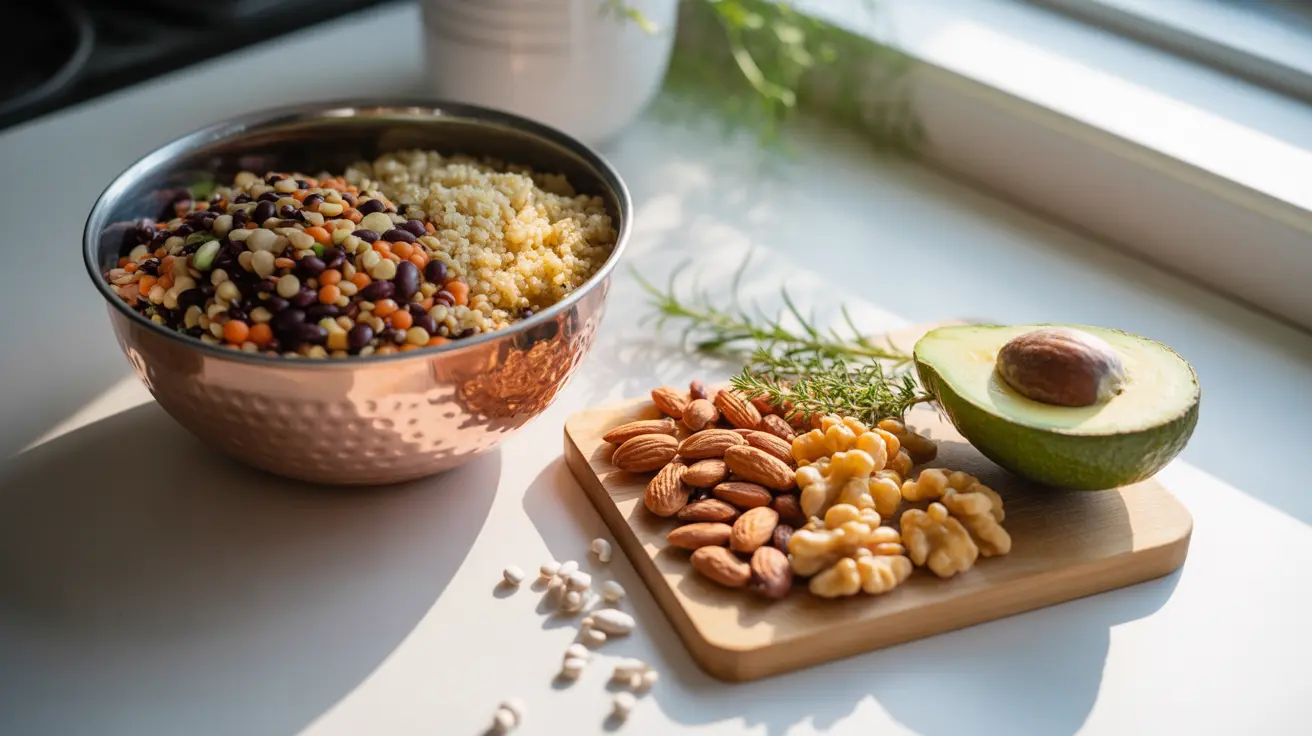Protein is a crucial macronutrient that plays essential roles in our body, from building muscle to supporting immune function. While many people are familiar with complete proteins found in animal products, understanding incomplete proteins is equally important, especially for those following plant-based diets.
In this comprehensive guide, we'll explore what makes a protein incomplete, how to effectively incorporate these protein sources into your diet, and practical ways to ensure you're meeting your nutritional needs.
What Are Incomplete Proteins?
Incomplete proteins are protein sources that don't contain all nine essential amino acids in sufficient quantities. These protein sources, typically found in plant-based foods, may be lacking one or more essential amino acids that our bodies cannot produce on their own.
Common sources of incomplete proteins include:
- Legumes (beans, lentils, peas)
- Nuts and seeds
- Grains (rice, wheat, corn)
- Some vegetables
The Science Behind Protein Completeness
To understand incomplete proteins, it's important to recognize that proteins are made up of amino acids. While our bodies can produce some amino acids (non-essential), there are nine essential amino acids that must come from our diet:
- Histidine
- Isoleucine
- Leucine
- Lysine
- Methionine
- Phenylalanine
- Threonine
- Tryptophan
- Valine
Combining Protein Sources Effectively
While historical nutrition advice emphasized combining incomplete proteins at each meal, current research shows that consuming a variety of protein sources throughout the day is sufficient for meeting your amino acid needs. Here are some classic complementary protein combinations:
- Beans and rice
- Hummus and whole grain pita
- Peanut butter on whole grain bread
- Corn tortillas with black beans
Optimizing Plant-Based Protein Intake
For those following vegetarian or vegan diets, getting adequate protein from incomplete sources requires thoughtful planning but isn't complicated. Focus on eating a diverse range of plant foods throughout the day to ensure you're getting all essential amino acids.
Some strategies for optimizing protein intake include:
- Incorporating protein-rich foods at each meal
- Varying your protein sources throughout the day
- Including legumes and whole grains regularly
- Adding nuts and seeds to meals and snacks
Frequently Asked Questions
What foods are considered incomplete proteins and why do they lack certain essential amino acids?
Incomplete proteins are typically plant-based foods like grains, legumes, nuts, and some vegetables. They lack one or more essential amino acids due to their natural composition and the way plants synthesize proteins. For example, grains are often low in lysine, while legumes may be low in methionine.
How can vegetarians and vegans ensure they get all essential amino acids from incomplete plant proteins?
Vegetarians and vegans can ensure adequate amino acid intake by consuming a variety of plant-based proteins throughout the day. This includes combining different protein sources like legumes, whole grains, nuts, and seeds. It's not necessary to combine these at every meal; eating various sources throughout the day is sufficient.
Is it necessary to combine incomplete proteins in the same meal to get complete protein nutrition?
No, it's not necessary to combine incomplete proteins at the same meal. Current research shows that consuming various protein sources throughout the day is adequate for meeting all essential amino acid requirements. Your body maintains an amino acid pool that it can draw from as needed.
What are some practical examples of food combinations that create a complete protein from incomplete sources?
Effective combinations include rice and beans, hummus with whole grain pita, peanut butter on whole grain bread, and quinoa with black beans. These combinations naturally complement each other's amino acid profiles, though remember they don't need to be eaten together.
Are incomplete proteins from plants still healthy and sufficient for meeting daily protein needs?
Yes, incomplete proteins from plant sources are healthy and can adequately meet daily protein needs when consumed in sufficient quantities and variety. Plant-based proteins also come with additional benefits like fiber, vitamins, minerals, and antioxidants. Many successful athletes and healthy individuals thrive on plant-based diets rich in incomplete proteins.




